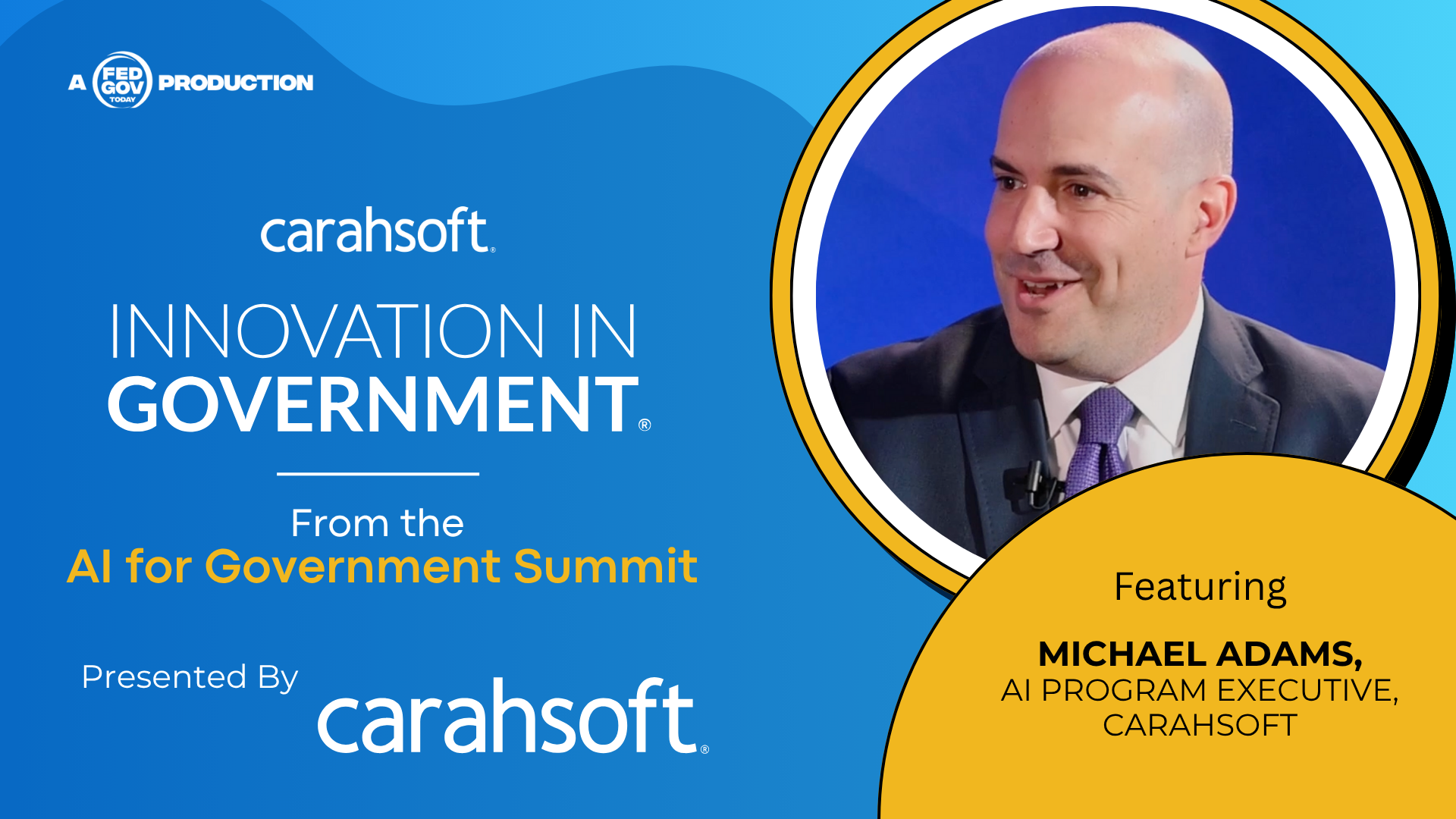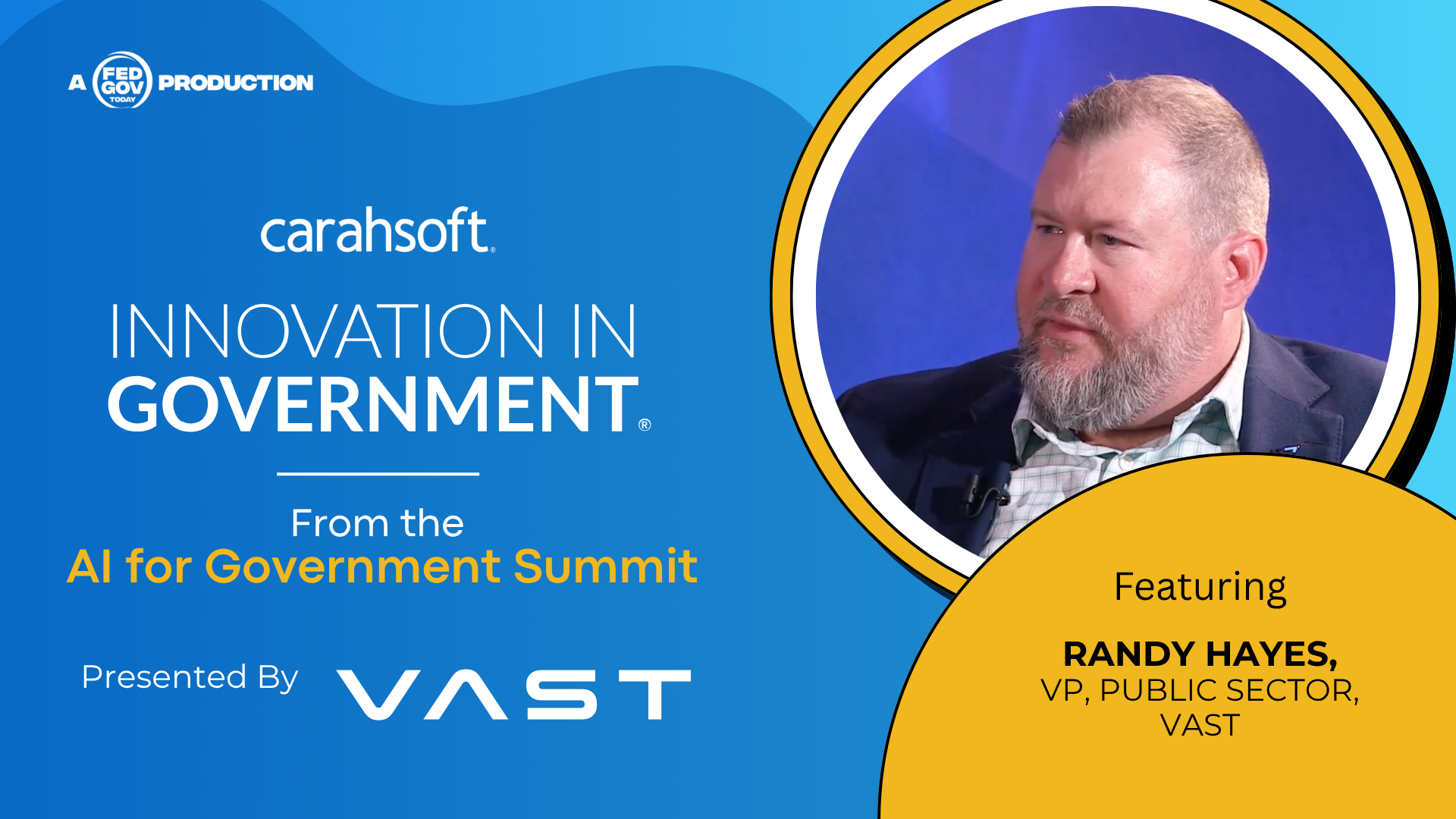Original broadcast 6/11/25
Presented by Carahsoft
At the U.S. Department of Agriculture, the digital transformation is more than a strategic goal—it’s a necessity. With limited funding, complex mission demands, and growing cybersecurity threats, USDA is turning to artificial intelligence to do more with less. Information Technology Manager Rudolf Rojas shared at the AI for Government Summit how AI is playing an increasingly critical role in both protecting valuable data and improving the efficiency of core operations.
 Rojas oversees security for several of USDA’s web presences and systems, and he sees AI as essential to maintaining the integrity of the agency’s sensitive data. Much of USDA’s information—particularly agricultural datasets from American farms—is closely watched by global financial markets. These datasets are used by analysts on Wall Street and the Chicago Board of Trade to forecast commodity trends, making them prime targets for cyber intrusion. “We have a lot of international users and a lot of hits trying to break in,” Rojas explained. “If that data gets out early, it could manipulate entire markets.”
Rojas oversees security for several of USDA’s web presences and systems, and he sees AI as essential to maintaining the integrity of the agency’s sensitive data. Much of USDA’s information—particularly agricultural datasets from American farms—is closely watched by global financial markets. These datasets are used by analysts on Wall Street and the Chicago Board of Trade to forecast commodity trends, making them prime targets for cyber intrusion. “We have a lot of international users and a lot of hits trying to break in,” Rojas explained. “If that data gets out early, it could manipulate entire markets.”
To combat this, USDA is working with security partners to integrate AI into their defensive operations. These partners are being pushed to deliver greater value under tighter budgets, using AI to develop dashboards that visualize threat patterns, flag intrusions in real-time, and help Rojas’ team stay ahead of malicious actors. AI isn’t replacing cybersecurity experts—it’s augmenting them with the speed and scale needed to protect mission-critical data in a dynamic threat environment.
But the role of AI at USDA doesn’t stop at defense. Rojas is also leading efforts to incorporate AI into operational modernization, starting with USDA’s websites and acquisition processes. As part of a major web modernization push, the department is bringing in contractors to upgrade multiple digital platforms. The challenge? Evaluating over 60 vendor applications to find the most qualified partners. Manually reviewing that many submissions would take days or even weeks. With AI, Rojas plans to automate the first round of screening—rapidly identifying which proposals meet key criteria and surfacing the strongest candidates for further review. This not only saves time but helps ensure fairness and consistency in the evaluation process.
USDA is also applying AI in the field—literally. Rojas described a pilot program in Florida that uses unmanned aerial vehicles (UAVs) to monitor citrus groves for signs of blight, a disease that threatens crops and livelihoods. Traditionally, detecting this kind of agricultural threat would require human inspectors to visit each site manually. With AI, aerial images can be analyzed for risk factors, patterns, and environmental conditions, allowing the agency to identify problem areas before the disease spreads. This geospatial AI application saves time, reduces costs, and supports farmers with faster, data-driven responses.
 These examples represent just a fraction of the broader AI activity underway at USDA. According to Rojas, the department currently has between 50 and 100 active AI pilots in play. Each pilot must meet a core set of criteria: it must reduce operational costs, improve efficiency, and directly support USDA’s mission of serving farmers, ranchers, and producers. Projects that demonstrate measurable value are candidates for scaling across the enterprise.
These examples represent just a fraction of the broader AI activity underway at USDA. According to Rojas, the department currently has between 50 and 100 active AI pilots in play. Each pilot must meet a core set of criteria: it must reduce operational costs, improve efficiency, and directly support USDA’s mission of serving farmers, ranchers, and producers. Projects that demonstrate measurable value are candidates for scaling across the enterprise.
With so many efforts in motion, the challenge becomes one of prioritization and integration. Rojas is approaching this by focusing on how each AI use case can support the agency’s fundamental goals: security, efficiency, and service delivery. He knows that resources are tight and staff are stretched, which makes AI not a luxury—but a necessity. “We’re being asked to deliver more with fewer people,” he said. “AI helps us meet that challenge.”
Rojas also emphasized the importance of accountability and trust in AI-driven processes. Whether it’s selecting contractors or protecting market-sensitive data, the tools used must be transparent, explainable, and secure. That’s why his team is working with vendors that not only understand technology but also understand the mission of USDA. Partnerships are key to delivering results that are aligned with government values and constraints.
Looking ahead, Rojas sees AI becoming deeply embedded in USDA’s workflows—not as a replacement for human judgment, but as a tool to extend the reach and impact of the people behind the mission. With the right governance, clear goals, and continuous evaluation, he believes USDA can lead by example in demonstrating how AI can strengthen both operations and outcomes.
Key Takeaways:
-
AI protects USDA’s high-value agricultural data from market-sensitive breaches.
-
Automated proposal review improves efficiency in contractor acquisition.
-
Geospatial AI helps detect and respond to crop threats faster and more cost-effectively.
This interview was featured in the program Innovation in Government recorded on location at the Carahsoft AI for Government Summit. To watch the full program, click here.



